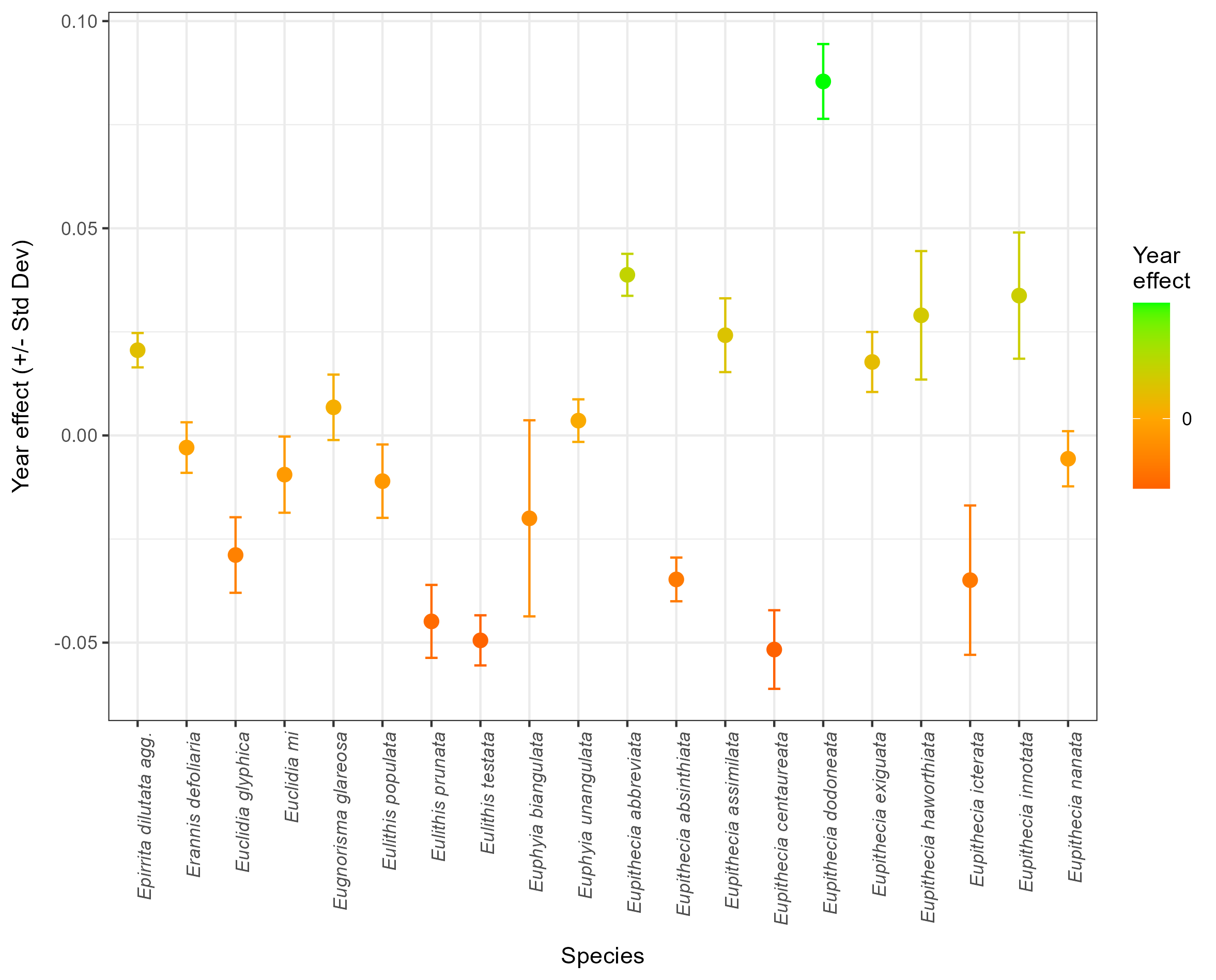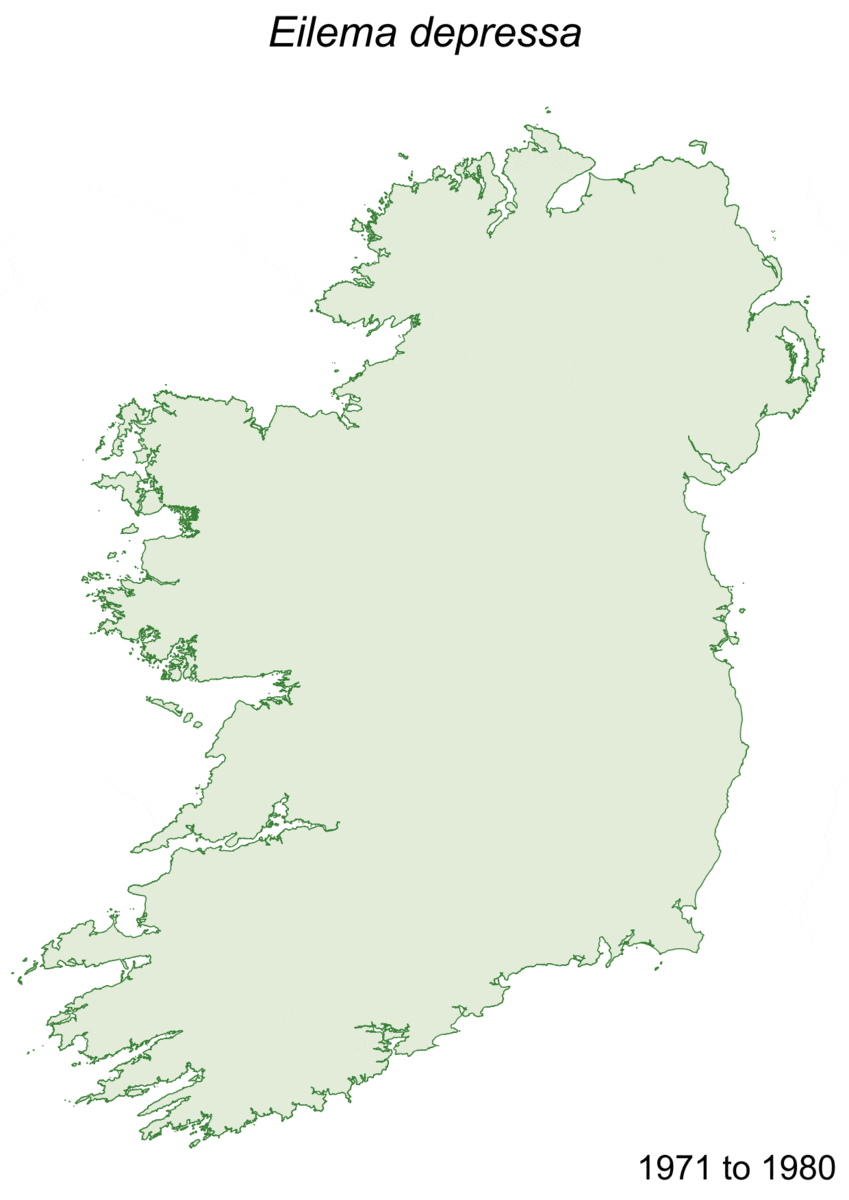
Review of species range change detection approaches and their application in Ireland
This project aimed to test approaches to detecting changes in invertebrate ranges in Ireland. As climate change may have a significant impact on species distributions in relation to habitat availability, understanding these changes is critically important. The knowledge gained can influence policy and conservation priorities that aim to mitigate the impacts of the changes.
The biggest obstacle for most taxa is the lack of consistent recording, and this is especially true for the less well recorded taxa, such as invertebrates. Records tend to be concentrated where recorders live and more charismatic and readily identified species tend to be recorded better. This means that it is impossible to know whether an apparent change in a species frequency or distribution is real or the result of spatiotemporally heterogeneous recording.
Five approaches were trailed:
Simple species frequency trend models that made no attempt to correct for variable species detection
Telfer’s Change Index
Reporting rate models, including the Well Sampled Sites approach
Frescalo
Occupancy modelling
Analysis was undertaken in the statistical programming language R, using the in development package sparta v.0.2.19.
Maxent was also trialled, though this is less useful for assessing historic change and more valuable for understanding the environmental factors affecting species and predicting future change in their distributions. Frescalo and Maxent both require environmental data, so data were prepared that could be consumed by both analyses encompassing land cover, climate averages, elevation and food plant distributions. These are available for use in future Irish studies.
All analyses were successful, though the more complex approaches proved to be most reliable, especially Frescalo and occupancy modelling. Potential range changes were identified for several species, including the Mouse Moth Amphipyra tragopoginis and Yellow Shell Camptogramma bilineata. The Buff Footman Eilema depressa was found to have undergone one of the most dramatic range changes, from being rare in the south west in the 1970s to widespread in Ireland by 2020.
This work was funded through the National Parks and Wildlife Service NPWS Grants for small recording projects 2023. Michael O’Donnell kindly gave permission for the Irish macro moths dataset to be used.

Year effect results for twenty species analysed using a reporting rate model and the well-sampled sites method

Frescalo trend chart for Eilema depressa

Species occupancy trend chart for Eilema depressa

Animated distribution map of Eilema depressa showing how its distribution has changed over time


